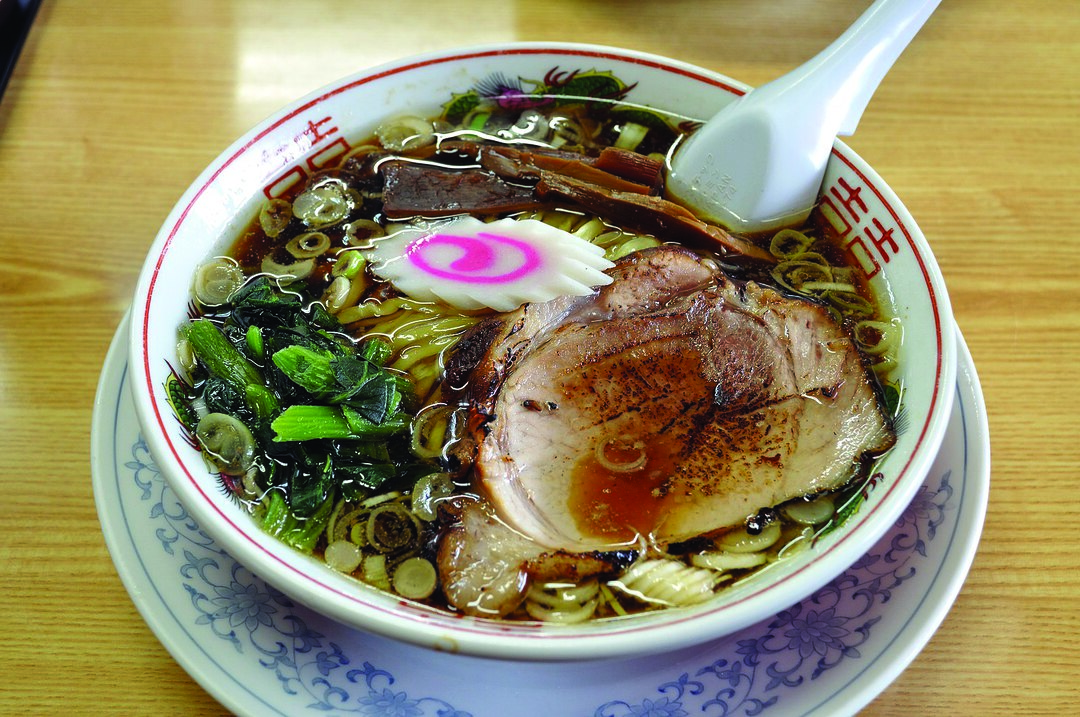Two weeks ago, I eagerly linked arms with friends and chose a booth at Toronto’s Robo Sushi restaurant. We entered at 6:00 pm and were awaiting our first meal of the day; we watched eagerly as miniature, robotic creatures roamed the space to serve plates of sushi to nearby tabletops. As we passed the futuristic menu to one another — a menu that was showcased on an iPad — our anticipation grew.
When the iPad was passed to me, I squinted at each section and carefully selected my favourites. Miso soup. Shrimp dumpling. Salmon pizza. Swipe after swipe, the menu’s categories meshed into one another, and I — in the gleeful, irresponsible fashion of a typical 20-year-old — forgot about my choices. That is, I forgot about them until I stumbled across one alarming word: noodle. Abruptly, I dropped the iPad and ignored my friend’s protests that I hadn’t finished reading the menu.
“My stomach doesn’t react well to noodles,” I explained sheepishly, omitting the fact that it was the item I most loved. If I were to indulge in my desires, I could only imagine the abdominal cramps that would follow the gruesome period of constipation they’d cause.
There was a long pause before a friend nodded. “I’m lactose intolerant,” he muttered. “I’m familiar with that kind of pain.”
Early childhood constipation
As a child, I suffered from constipation. The average frequency of emptying one’s bowels is described to range from three times a day to once every three days; sometimes, I was lucky enough to squeeze in the act once every three weeks. These extended periods of defecation drought would end usually with a night of agony. If you’ve stumbled across a meme about crying on the toilet, just imagine that — except the pain wouldn’t subside for hours.
Despite my bodily struggles, I knew that I wasn’t solely to blame for my anguish; part of the responsibility fell on my family history. In the midst of my crying spurts, my mother would often describe how her doctor regularly prescribed her laxatives in her youth, in response to which my grandfather would threaten to increase her vegetable intake.
I’m sure you’ve heard the statement that food affects your poop — after all, your diet makes up its composition. Feces is primarily a collection of water, fat, bile, undigested food, mucus, inorganic salts, and dead bacteria. This is why specific components of food are often recommended to patients who have trouble with emptying their bodies — for example, fibre isn’t digested, so it moves to the colon to be expelled and can help with bowel movement.
The impact healthy eating has on one’s body is also why the ‘80/20’ rule is sometimes recommended. The rule dictates that one eats nutritious food for eighty per cent of their meals, and consume whatever they please for the remaining 20 per cent.
So, like many would, my mother recommended I eat healthier and wait for results. Out of desperation, I did; I eliminated processed foods such as instant noodles from my diet altogether.
But, to my dismay, this advice didn’t work, and I was back to the drawing board.
Creating an exercise routine
Growing up, I was never active. Instead, I was that kid who frequently discussed menstruating with their cisgender, male gym teacher in order to skip running laps every month. I wasn’t proud of my habits — so, true to the common “self improvement during a pandemic” tune, I decided to begin exercising.
My mother joined me on my venture, which consisted of a daily walking routine. I adapted to this game plan well — but I noticed that in the middle of my hobby, I would often feel an instant prodding to empty my bowels.
If this feeling seems ordinary to you, congratulations! You probably use the bathroom at a normal rate. I, on the other hand, had lived with unhealthy bowel functions for such a long time that I assumed my body’s schedule was normal. So, in the first week or so of regaining healthy habits, I thought that I was severely ill.
Nevertheless, as COVID-19 ruthlessly persisted, so did my walks. Soon, my mother and I had evolved from a 15-minute neighbourhood stroll to two-hour-long hikes. Throughout this process, I noticed that I was becoming physically healthier — my stomach hurt less frequently, and my body was no longer bloated. Soon, I began consistently increasing the intensity of my exercises through YouTube workout videos. If you’re looking for an intense instructor, I recommend Pamela Rief.
For anyone aching to know the science behind my miraculous transformation, the best I know is this: physical activity can regulate bowel movements. Exercise has been proven to quicken digestive processes and increase muscle contractions in the colon, which helps move stools more regularly. I also know that the Canadian Digestive Health Federation recommends a minimum of 30 minutes of physical activity, five times a week.
If you’re looking for an emotional, humanistic sign to exercise, know this: before exercising, I watched as friends ate ramen for every meal on their Snapchat stories and cried in envy. Now I too can enjoy the meal periodically, because I know I’ll be able to empty my waste afterwards.
Exercise doesn’t have to be about changing your appearance or building endurance. Instead, you can exercise to snatch an iPad from your friends and order ramen at a sushi restaurant, like I did.


